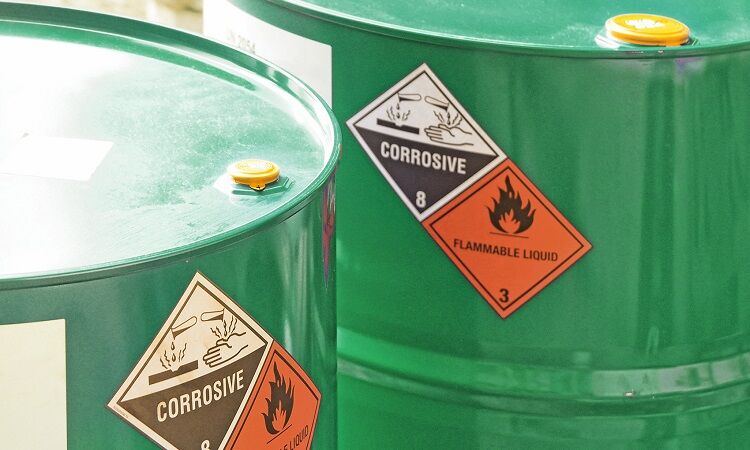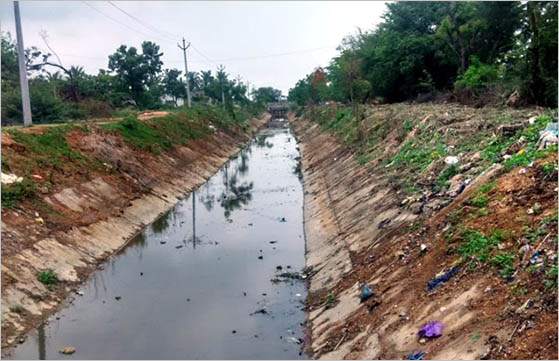Leading Industrial Wastewater Treatment Solutions: Ensuring Conformity and Efficiency
Leading Industrial Wastewater Treatment Solutions: Ensuring Conformity and Efficiency
Blog Article
Exactly How Liquid Garbage Disposal Works: A Comprehensive Summary of Methods and Technologies Employed

Review of Liquid Waste Types
The intricacy of fluid waste kinds necessitates a complete understanding of their features and effects for disposal. Fluid waste can extensively be categorized right into several kinds, consisting of commercial, community, farming, and contaminated materials. Each classification displays distinct residential properties, calling for details monitoring methods to alleviate environmental and health dangers.
Industrial liquid waste stems from making processes and frequently consists of a series of contaminants, such as hefty steels, solvents, and organic substances. Local liquid waste, primarily comprising wastewater from families and commercial establishments, includes natural issue, nutrients, and pathogens (industrial wastewater treatment). Agricultural liquid waste, consisting of drainage from farms, may include plant foods, chemicals, and pet waste, posing threats to water high quality and ecological communities
Harmful liquid waste is identified by its toxicity, sensitivity, or potential to create damage. This group includes materials like acids, bases, and particular chemicals that necessitate stringent handling and disposal methods. Understanding these varied liquid waste kinds is crucial for developing efficient disposal approaches and making sure conformity with ecological laws. Appropriate category and characterization are important for applying appropriate therapy strategies and reducing the damaging effect on public wellness and the environment.
Physical Therapy Approaches

Testing is the first action, where bigger fragments and particles are eliminated from the liquid waste utilizing screens or grates. This process safeguards downstream equipment from damages and makes certain smoother procedure. Adhering to screening, sedimentation utilizes gravitational pressure to different solids from liquids. In sedimentation tanks, larger fragments clear up at the bottom, forming a sludge layer, while the clarified liquid can be more dealt with.
Filtration is an additional necessary technique that entails passing the fluid with porous products, such as sand or membranes, to record smaller bits. This step enhances the top quality of the fluid, making it ideal for succeeding therapy procedures.

Chemical Therapy Methods
Chemical therapy techniques are essential for properly taking care of liquid waste, specifically in dealing with liquified and colloidal contaminants that physical techniques may not adequately eliminate. These strategies utilize different chemical representatives to neutralize, precipitate, or change unsafe substances into much less harmful kinds.
One common technique is coagulation and flocculation, where chemicals such as alum or ferric chloride are included to promote the aggregation of put on hold fragments. This process boosts sedimentation, permitting much easier elimination of the resulting sludge. In addition, oxidation processes, using representatives like chlorine or ozone, are employed to break down intricate organic compounds and microorganisms, providing the waste safer for discharge or further treatment.
Neutralization is one more essential method, which changes the pH of acidic or alkaline waste streams to neutral levels, preventing prospective damage to downstream systems and the atmosphere. Additionally, advanced oxidation processes (AOPs) use mixes of oxidants and ultraviolet light to weaken relentless toxins, achieving a higher level of treatment efficiency.
Biological Therapy Processes
Biological treatment processes play an important function in the administration of fluid waste by making use of microbes to decompose raw material find out here now and lower impurity degrees. These processes can be generally classified right into anaerobic and cardiovascular treatments, each employing particular microbial communities to achieve effective waste destruction.
Cardio therapy involves making use of oxygen to assist in the break down of organic products by microorganisms. This procedure is frequently carried out in activated sludge systems, where aeration containers supply a favorable atmosphere for microbial growth, resulting in the oxidation of organic contaminants. The resultant biomass can be divided from treated effluent through sedimentation.
On the other hand, anaerobic therapy occurs in the absence of oxygen, depending on various germs to damage down raw material. This approach is especially advantageous for high-strength waste, as it generates biogas, a renewable resource source, while lowering sludge production. Technologies such as anaerobic digesters are frequently utilized in industrial and metropolitan applications.
Both cardiovascular and anaerobic organic treatments not just lessen the environmental effect of liquid waste yet likewise promote resource recuperation, making them necessary components of sustainable waste monitoring strategies. Their performance, efficiency, and versatility sustain their widespread execution throughout various markets.
Arising Technologies in Disposal
Innovative strategies to liquid garbage disposal are swiftly evolving, driven by improvements in modern technology look here and an increasing focus on sustainability. Amongst these arising technologies, membrane bioreactors (MBRs) have gotten grip for their ability to integrate organic therapy with membrane filtering, leading to premium effluent that can be reused in various applications. MBRs make it possible for smaller sized impacts and more reliable operations compared to conventional systems.
An additional encouraging growth is making use of anaerobic food digestion incorporated with nutrient recuperation technologies, which not just treats liquid waste but also generates biogas and recoups useful nutrients like nitrogen and phosphorus. This dual benefit enhances resource efficiency and lowers ecological effect.
Furthermore, advanced oxidation processes (AOPs) are being adopted for the destruction of intricate natural toxins. These approaches use powerful oxidants and catalysts to damage down pollutants at the molecular degree, supplying an extremely efficient solution for tough waste streams.
In addition, the integration of man-made intelligence and artificial intelligence in waste monitoring systems is enhancing operational efficiency and predictive upkeep, resulting in reduced prices and enhanced environmental conformity. These modern technologies show a significant change towards even more sustainable and effective fluid waste disposal practices.
Verdict
To conclude, effective fluid waste disposal demands a detailed understanding of various strategies and innovations. The combination of physical, chemical, and organic treatment approaches guarantees the reliable management of varied waste types. In addition, the development of cutting-edge technologies boosts treatment effectiveness and promotes sustainability in waste administration techniques. By continually advancing these methods, it comes to be possible to attend to the expanding challenges connected with fluid waste, ultimately adding to ecological security and source recuperation.
Fluid waste disposal is an essential element of ecological administration, calling for a comprehensive understanding of different methods and modern technologies customized to various waste kinds. Fluid waste can generally be classified right into several kinds, consisting of commercial, metropolitan, farming, and unsafe waste. Agricultural fluid waste, consisting of overflow from farms, may contain you can try this out fertilizers, chemicals, and animal waste, posing risks to water quality and communities.
Various physical treatment methods play an important function in handling liquid waste effectively - industrial wastewater treatment.In verdict, reliable fluid waste disposal demands a detailed understanding of different techniques and technologies
Report this page